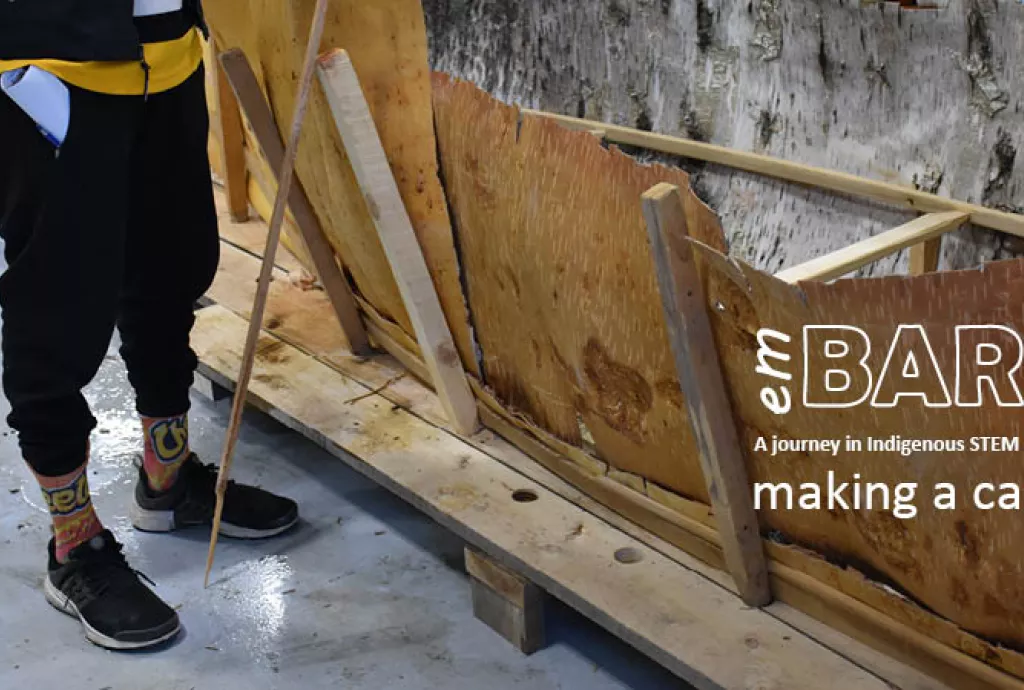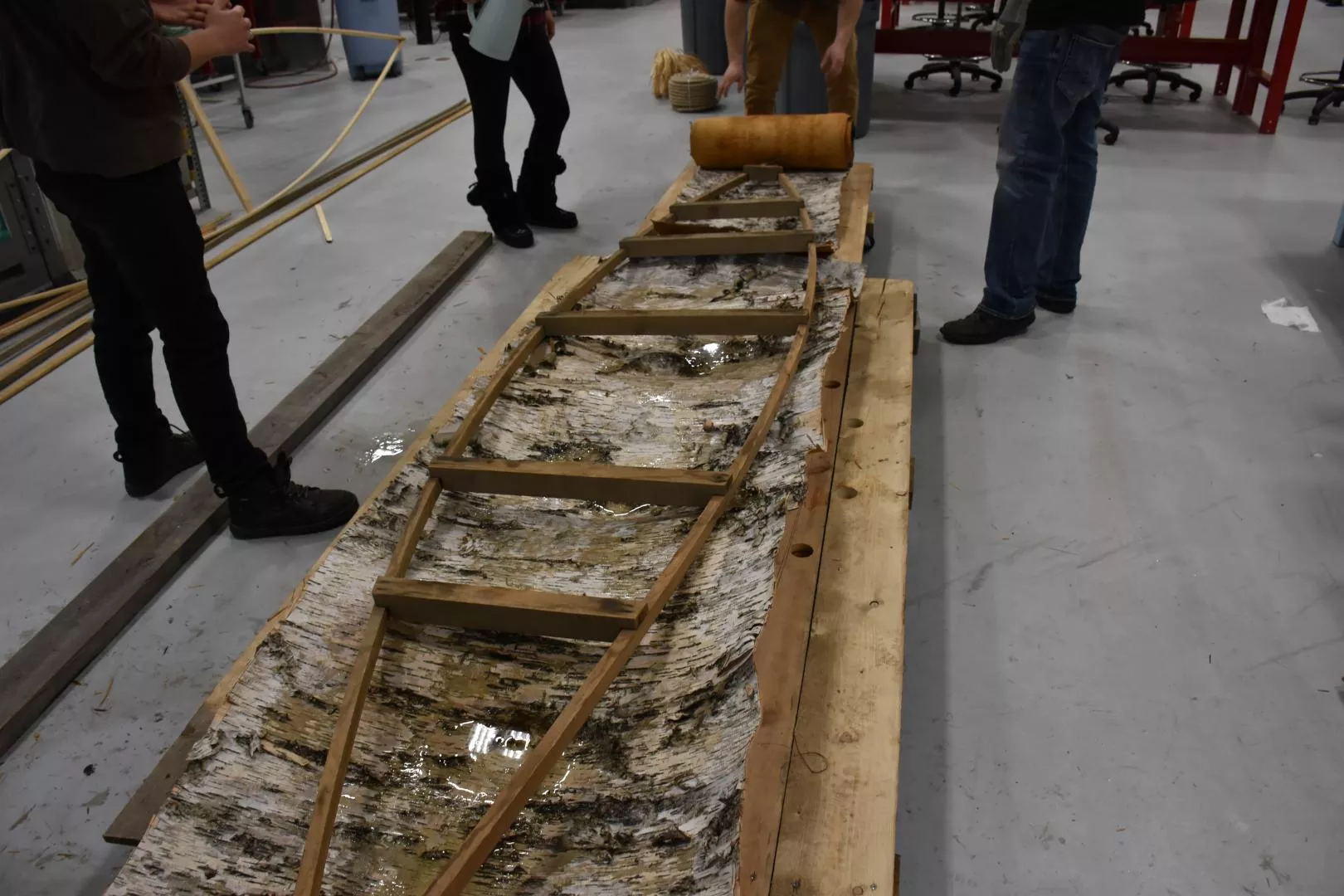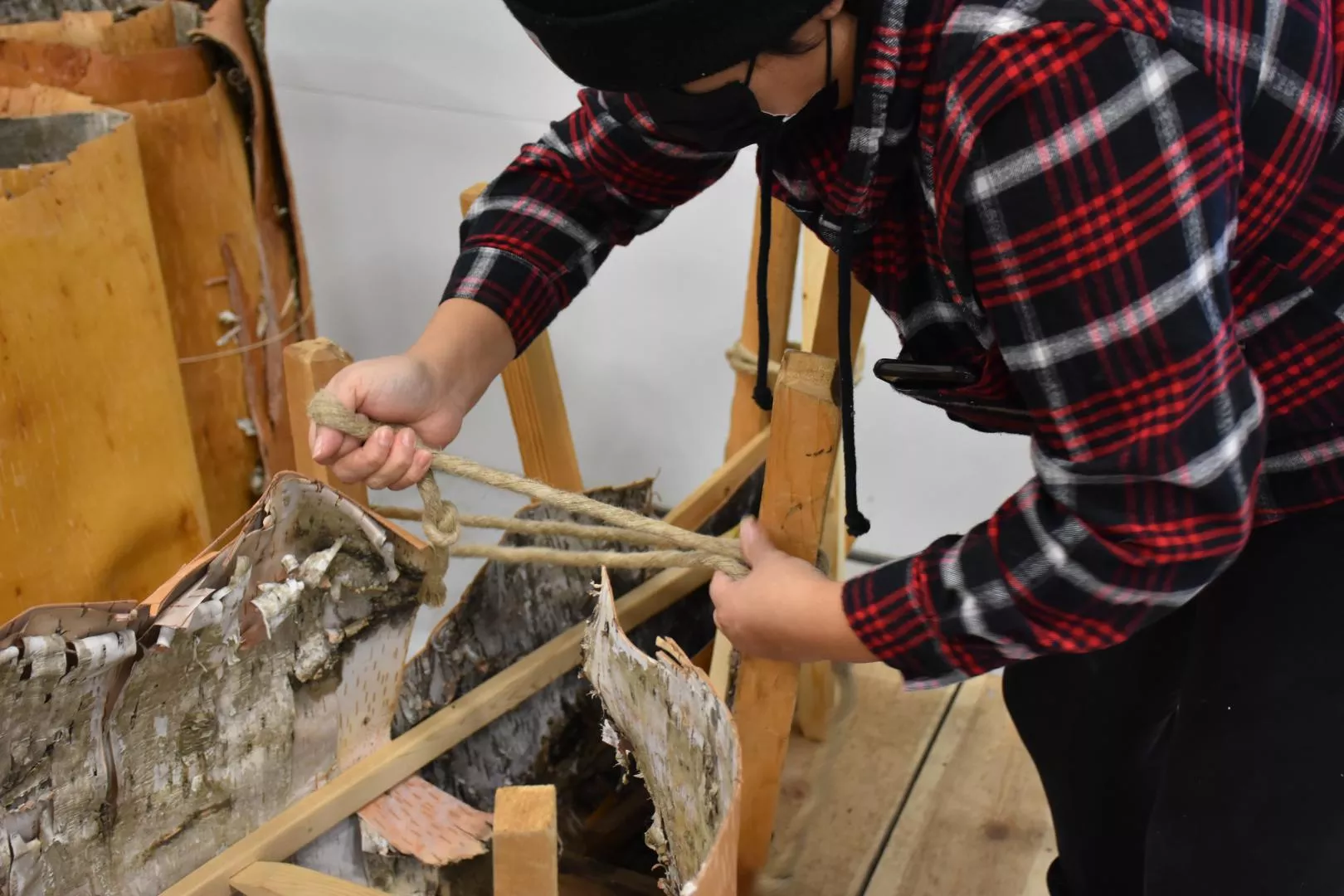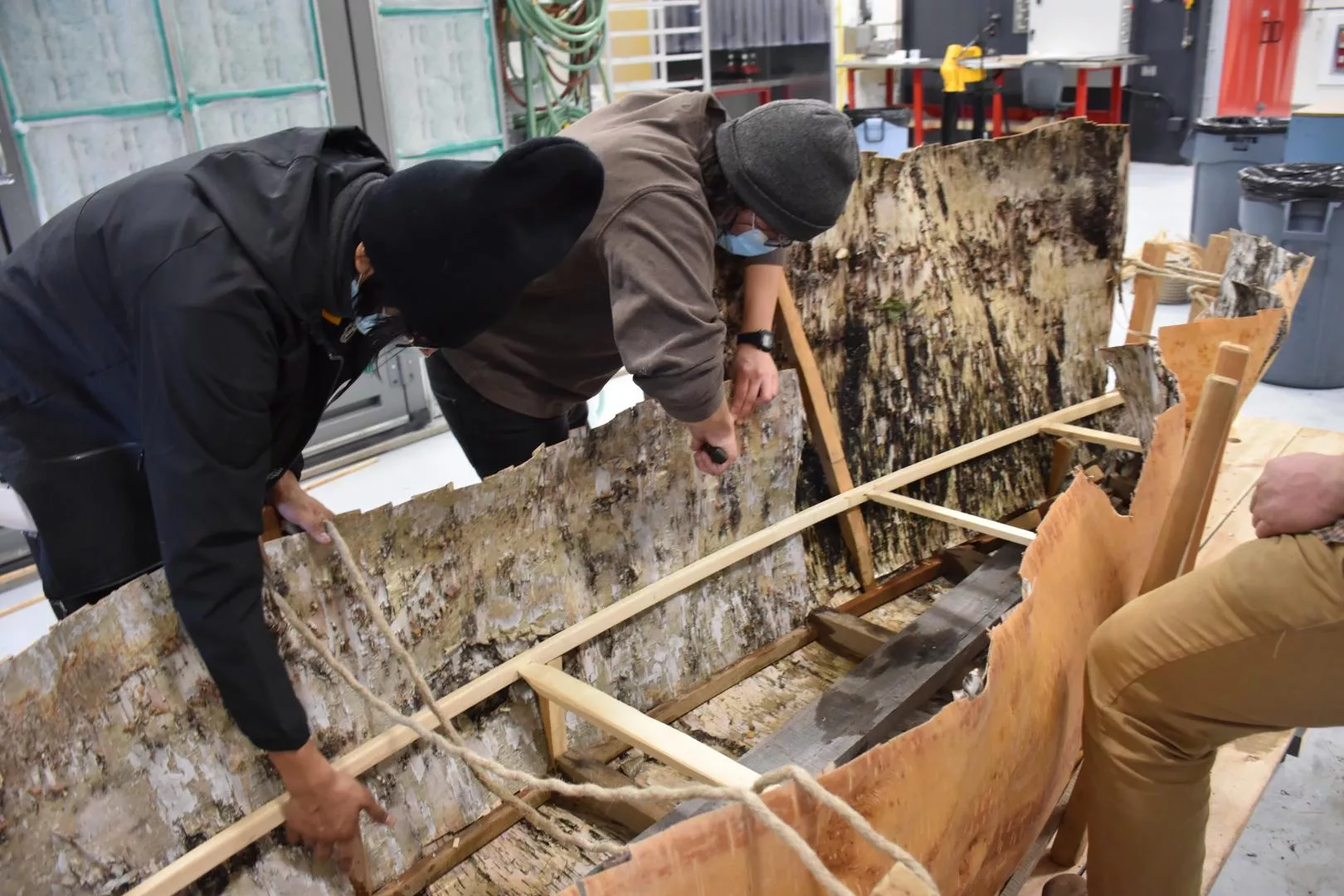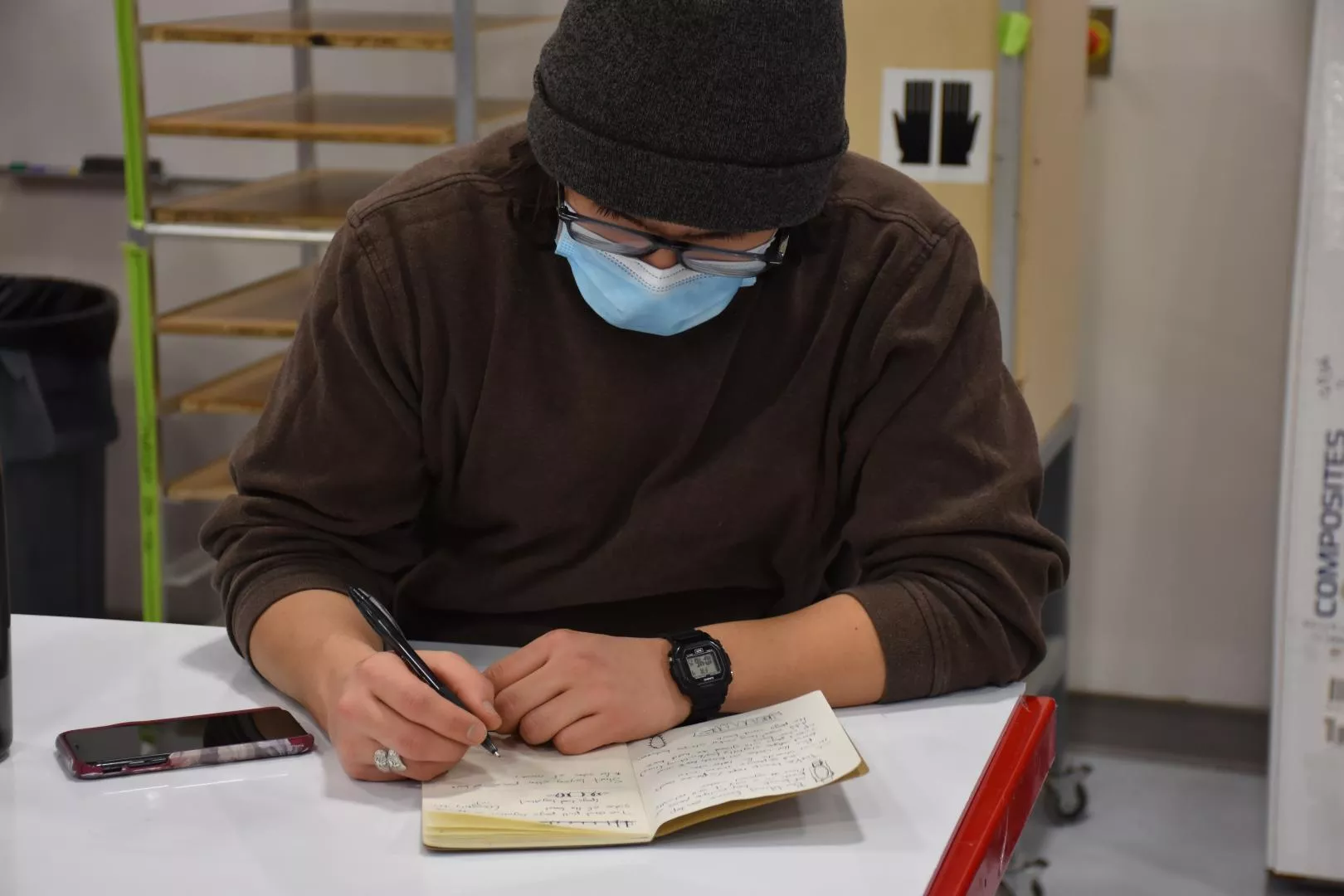emBark- A Journey in Indigenous STEM Education: Making a Canoe
Posted:
Campus:
The hallway to Room 425 in the McIntyre building at Confederation College’s Thunder Bay Campus has a winding blue line; it is a metaphor for the river just outside the building. The campus is beautiful with deep evergreen trees and poplars along the shore. It is on Indigenous land, home to the Ojibway people who have been here for at least 5000 years, and probably even longer.
The students in Room 425 are enrolled in STEM - Indigenous women and Youth. They are embarking on a new journey, and are building the College's first birch bark canoe.
The class is delivered by a team of creative craft persons from Old Fort William, Connor Hamilton and Elliot Cromarty. Elliot is the Indigenous and Cultural Lead at the Fort and has a wide berth of knowledge on Indigenous peoples, practices, and worldviews. Connor has been building canoes with Old Fort William since he was 16. He has since learned many of the trades at Old Fort William.
Sandra Styles, a Professor in the Natural Resource Department, is giving students a scientific understanding of the birch tree and the boreal forest, and Alicia Brink, and Elder Melissa Roberts are delivering Indigenous content meant to broaden and enrich students understanding of the materials, techniques and offer support while they experiment with new ideas.
The birch bark canoe was a gift given by Gitche Manitou (the Great Spirit) to Nanabijou – a trickster, but lovable Manitou who lives on these lands, and now rests in the Sleeping Giant. Nanabijou taught the Indigenous peoples on this land how to make canoes. The canoe was instrumental for the Indigenous peoples who used it for travel, food, and harvesting manoomin (wild rice). The canoe was also a large part of the fur trade. Indigenous peoples taught the French and European fur traders how to make canoes, and even how to repair them.
The birch bark canoe is an amazing engineering feat, and its style and construction is still the same as it was hundreds, and maybe thousands, of years ago. Last week, students laid out the bark on a pre-made form, and this week we will sew the bark together with roots of a spruce tree harvested last spring.
The students in the class have journals that they note the process. They move from working on the canoe to their journals where they have carefully sketched out tools such as the crooked knife, and visual representations of the steps involved. They do this as a requirement of their class, but they also do this to remember the steps involved in case they want to do it again.
The excitement in the air is palpable. Students and staff work together to learn, and to make something ancient, relevant, and breathing with the life forest.
The program enters into an exciting broader dialogue that asks teachers and facilitators how they can honour Indigenous ways of knowing and deliver curriculum learning objectives in their class. This can sometimes seem scary to non-Indigenous teachers who do not want to talk about knowledge that is not theirs.
Elder Melissa Roberts, and former Indigenous Navigator, Alicia Brink meet weekly with teachers in the program to talk about ways they we can incorporate Indigenous learning to their weekly lessons. Elder Melissa Roberts is a creative thinker, and former teacher with experience creating Indigenous learning objectives in the high school curriculum. She also teaches an outdoor education center. Alicia has a background in outdoor experiential education, and a good understanding of the college resources, and spaces that can be used for learning (such as the outdoor classroom).
These meetings have been exciting, and the teachers in the program show great humility and bravery in their openness and wiliness to hold space for Indigenous perspectives, and ways of learning and teaching.
COVID-19 has been long and often times isolating. Everyone has needed to change the way we learn, teach, work, live and socialize. This canoe class, these students and this program is real, embodied and ancient. It reminds me that we are still connected to each other, to the land, and to the teachings of our ancestors.


